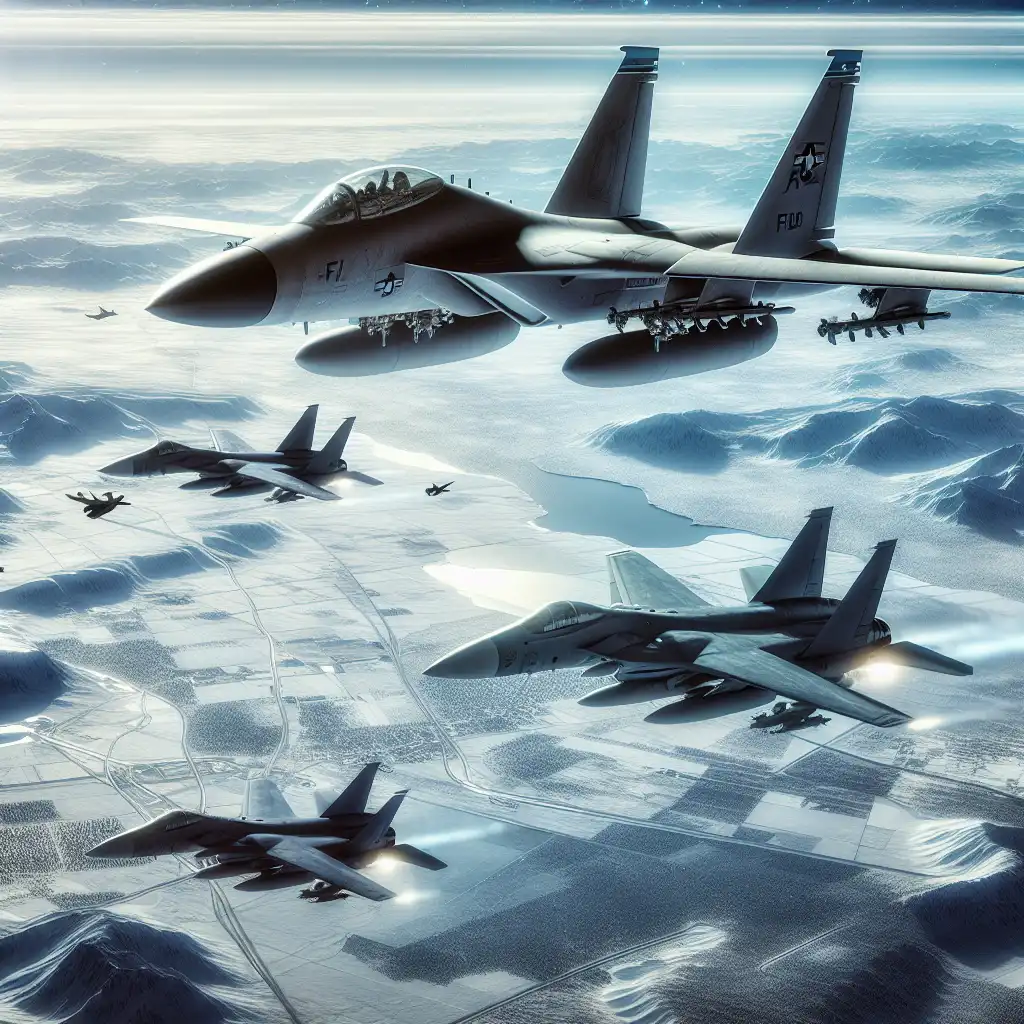Table of Contents
ToggleMonitoring the Skies: NORAD’s Vigilance Over North American Airspace
In a display of international surveillance and defense, the North American Aerospace Defense Command (NORAD) recently detected, tracked, and intercepted two Russian TU-95 and two Chinese PRC H-6 military aircraft operating within the Alaska Air Defense Identification Zone (ADIZ) on July 24, 2024. The coordinated effort saw NORAD fighter jets from both the United States and Canada successfully conducting the intercept.
These aircraft remained in international airspace and did not penetrate American or Canadian sovereign territories. While this activity is not considered a direct threat, NORAD continues to exercise vigilance, ensuring that any competitor activity near North American borders is closely monitored and met with an appropriate presence.
Understanding the Alaska Air Defense Identification Zone (ADIZ)
What Is an ADIZ?
An Air Defense Identification Zone (ADIZ) is a defined area of international airspace that lies beyond a country’s sovereign airspace. The primary purpose of an ADIZ is to facilitate the prompt identification of all aircraft in the interest of national security. The Alaska ADIZ stretches over a large expanse of airspace, providing an essential buffer zone where aircraft are required to identify themselves before entering sovereign airspace.
- Purpose of ADIZ:
- Enhances national security
- Ensures early detection of potential threats
- Facilitates timely response to unidentified aircraft
Significance of the Alaska ADIZ
The Alaska ADIZ is particularly significant due to its proximity to both Russian and Chinese airspace. This strategic location makes it a focal point for monitoring foreign military activity. NORAD’s ability to detect and track aircraft in this zone is crucial for maintaining the sovereignty and security of North American airspace.
NORAD: A Bi-National Command
The Structure of NORAD
NORAD is a unique bi-national command involving the United States and Canada. This collaborative defense organization employs a multi-layered defense network that includes satellites, ground-based radars, airborne radars, and fighter aircraft. The seamless interoperability between these components allows NORAD to detect and track aircraft efficiently, ensuring that appropriate actions can be taken swiftly.
- Components of NORAD’s Defense Network:
- Satellites for space-based surveillance
- Ground-based radars for terrestrial monitoring
- Airborne radars for real-time tracking
- Fighter aircraft for immediate response
NORAD’s Mission and Capabilities
NORAD’s primary mission is to provide aerospace warning, aerospace control, and maritime warning for North America. This mission involves the continuous monitoring of airspace to detect potential threats and ensure the security of the continent. NORAD remains prepared to employ various response options, from intercepting aircraft to more escalated measures if necessary.
Recent Interception: Russian and Chinese Aircraft
Details of the Interception
On July 24, 2024, NORAD detected two Russian TU-95 and two Chinese PRC H-6 military aircraft operating within the Alaska ADIZ. NORAD promptly deployed fighter jets from both the United States and Canada to intercept these aircraft. Despite their proximity, these foreign military aircraft did not enter the sovereign airspace of either country.
- Aircraft Involved:
- Russian TU-95: A long-range strategic bomber
- Chinese PRC H-6: A twin-engine, jet-powered strategic bomber
Implications of the Interception
While the presence of Russian and Chinese military aircraft in the Alaska ADIZ is not considered an immediate threat, it underscores the importance of continuous monitoring and readiness. NORAD’s interception demonstrates its capability to respond to potential threats swiftly and effectively, ensuring the security of North American airspace.
The Role of NORAD in National Security
Continuous Surveillance and Monitoring
NORAD’s surveillance and monitoring capabilities are vital for maintaining national security. By employing a layered defense network, NORAD ensures that any potential threats are detected and tracked well before they can pose a danger to North American airspace.
- Surveillance Tools:
- Advanced radar systems
- Satellite imagery
- Real-time tracking technologies
Response and Interception Protocols
When an unidentified aircraft enters the ADIZ, NORAD follows strict protocols to identify and assess the potential threat. These protocols include deploying fighter jets to intercept and escort the aircraft, ensuring that it does not violate sovereign airspace.
- Interception Steps:
- Initial detection and tracking
- Identification of the aircraft
- Deployment of fighter jets
- Communication with the aircraft
- Escorting or diverting the aircraft as necessary
Frequently Asked Questions (FAQs)
What is the purpose of an ADIZ?
An ADIZ, or Air Defense Identification Zone, is a designated area of international airspace that requires the identification of all aircraft for national security purposes. It serves as a buffer zone for early detection and response to potential threats.
How does NORAD detect and track aircraft?
NORAD employs a multi-layered defense network that includes satellites, ground-based and airborne radars, and fighter aircraft. This network ensures seamless detection and tracking of aircraft within the ADIZ.
What happens if an unidentified aircraft enters the ADIZ?
When an unidentified aircraft enters the ADIZ, NORAD follows established protocols to identify the aircraft. This may involve deploying fighter jets to intercept and escort the aircraft, ensuring it does not violate sovereign airspace.
Is the interception of foreign military aircraft common?
While not an everyday occurrence, the interception of foreign military aircraft within the ADIZ is not uncommon. Such activities are closely monitored, and NORAD is prepared to respond to ensure the security of North American airspace.
How does NORAD ensure seamless interoperability between the U.S. and Canada?
NORAD operates as a bi-national command, with integrated defense systems and protocols that ensure seamless cooperation between the United States and Canada. This interoperability allows for efficient detection, tracking, and response to potential threats.
Conclusion
The recent interception of Russian and Chinese military aircraft within the Alaska ADIZ highlights the critical role of NORAD in maintaining North American airspace security. Through continuous surveillance, advanced detection technologies, and coordinated response protocols, NORAD ensures that potential threats are identified and addressed promptly. As a bi-national command, NORAD exemplifies the collaborative efforts of the United States and Canada in safeguarding the continent’s airspace, demonstrating a commitment to national security and readiness.
For further information, contact NORAD Public Affairs at (719) 554-6889 or via email at n-ncpa.omb@mail.mil. Follow NORAD on Facebook and X at NORAD Facebook and NORAD X.















